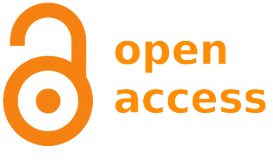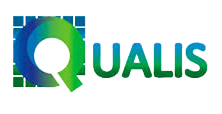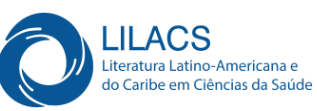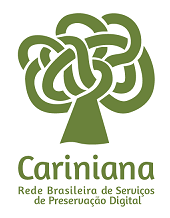Assessment of creativity in Psychology undergraduate students
DOI:
https://doi.org/10.5433/2236-6407.2014v5n1p25Keywords:
creativity, psychological assessment, college studentsAbstract
Creativity is an important human faculty in several performance areas, including the work of a psychologist. This article aimed to describe creativity in a group of Psychology undergraduate students in order to verify whether their professional development fosters creative potential. The study comprised 75 students, equally distributed in three groups from the first, fifth and tenth terms, aged 18 to 59, who were submitted to the Verbal TTCT (Torrance Test of Creative Thinking): Thinking Creatively with Words, following technical specifications of this tool. Further to test evaluation, results of the three groups were statistically compared and the main results showed higher creativity index in senior students, mainly regarding Fluency - ability to produce a large number of ideas, and Originality - ability to produce new and infrequent ideas.Downloads
References
Alencar, E.M.L.S. (2002). O contexto educacional e sua influência na criatividade. Linhas Críticas, 8(15), 165-178.
Alencar, E.M.L.S. & Fleith, D.S. (2003). Contribuições teóricas recentes ao estudo da criatividade. Psicologia: Teoria e Pesquisa, 19(1), 1-8.
Alencar, E.M.L.S. & Fleith, D.S. (2004). Inventário de práticas docentes que favoreçam a criatividade no ensino superior. Psicologia: Reflexão e Crítica, 17(1), 105-110.
Alencar, E.M.L.S. & Fleith, D.S. (2010). Escala de práticas docentes para a criatividade na educação superior. Avaliação Psicológica, 9(1), 13-24.
Bahia, S. (2008). Criatividade e universidade entrecruzam-se? Sísifo: Revista de Ciência da Educação, 7, 51-62. Recuperado em 15 de maio de 2014 de https://bit.ly/2X60CbV.
Campos, K.C.L. & Largura, W.A.N. (2000). Criatividade na formação de psicólogos: Percepção de alunos. Psicologia Escolar e Educacional, 4(2), 11- 19.
Castanho, M.E.L.M. (2000). A criatividade na sala de aula universitária. In: I.P. Veiga & M.E.L.M. Castanho (Orgs.), Pedagogia universitária: A aula em foco. (pp. 75-89.). São Paulo: Papirus.
Justo, J.S. (2001). Criatividade no mundo contemporâneo. In: M.S. Vasconcelos (Org.), Criatividade: Psicologia, educação e conhecimento do novo. (pp. 59-78). São Paulo: Moderna.
Nakano, T.C. & Wechsler, S.M. (2006). O percurso da criatividade figural do ensino médio ao ensino superior. Boletim de Psicologia, 56(125), 205-219.
Nakano, T.C. & Wechsler, S.M. (2007). Criatividade: Características da produção científica brasileira. Avaliação Psicológica, 6(2), 261-270.
Oliveira, M.L. (2001). Contribuições da psicanálise para a compreensão da criatividade. In: M.S. Vasconcelos (Org.), Criatividade: Psicologia, educação e conhecimento do novo. (pp. 21-42). São Paulo: Moderna.
Ostrower, F. (2012). Criatividade e processos de criação. (27ª ed.). Petrópolis: Vozes.
Sakamoto, C.K. (2000). Criatividade: Uma visão integradora. Psicologia: Teoria e Prática, 2(1), 50-58.
Sakamoto, C.K. (2007). As mil e uma realidades da experiência criadora: Uma metáfora do gênio criativo. In: C.K. Sakamoto (Org.), Um olhar criativo sobre a prática em psicologia: Proposições teóricas e técnicas (pp. 17-27). São Paulo: Editora Mackenzie.
Silva, T.F. & Nakano, T.C. (2012). Criatividade no contexto educacional: análise de publicações periódicas e trabalhos de pós-graduação na área da psicologia. Educação e Pesquisa, 38(3), 743-759.
Sternberg, R.J. (2006). The nature of creativity. Creativity Research Journal, 18 (1), p. 87-98. Recuperado em 16 de Agosto de 2013 de versler, S.M. (2004a). Avaliação da criatividade por palavras - Teste de Torrance. Versão Brasileira. (2ª ed. rev. ampl.). Campinas: IDB.
Wechsler, S.M. (2004b). Avaliação da criatividade verbal no contexto brasileiro. Avaliação Psicológica, 3(1), 21-31.
Downloads
Published
How to Cite
Issue
Section
License
Copyright (c) 2014 Estudos Interdisciplinares em Psicologia

This work is licensed under a Creative Commons Attribution 4.0 International License.
The Copyright of the published manuscripts belongs to the Journal. Since they are published in an open access Journal, they are freely available, for private use or for use for educational and non-commercial purposes.
The Journal has the right to make, in the original document, changes regarding linguistic norms, orthography, and grammar, with the purpose of ensuring the standard norms of the language and the credibility of the Journal. It will, however, respect the writing style of the authors.
When necessary, conceptual changes, corrections, or suggestions will be forwarded to the authors. In such cases, the manuscript shall be subjected to a new evaluation after revision.
Responsibility for the opinions expressed in the manuscripts lies entirely with the authors.



















